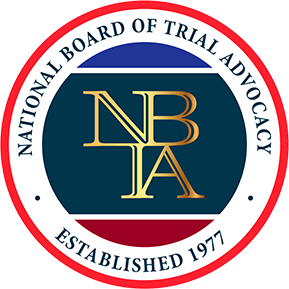A burn injury can leave more than scars—it can reshape every part of a person’s life. These are not routine medical events. They involve intensive hospital stays, repeat surgeries, and long stretches of painful recovery. The damage often goes deeper than skin, affecting muscles, nerves, and the ability to work, move, or sleep without discomfort. It’s a physical and emotional burden that doesn’t go away when the wound closes.
Georgia Burn Injury Lawyer
McArthur Law Firm represents Georgians who are dealing with the harsh reality of a serious burn injury caused by someone else’s poor decisions or lack of care. These cases demand focused legal action, not guesswork or delays. Our role is to hold the responsible parties accountable using the tools available under Georgia law.
McArthur Law Firm serves Fulton County, Bibb County and Fulton County, as well as Clayton County, Cherokee County, Forsyth County, and other counties in Georgia. For more information about the McArthur Law Firm or to set up a free consultation to learn what we may be able to do to help you with your personal injury case, give us a call at one of our offices in Georgia or fill out our online contact form.
- Atlanta Office: 404-565-1621
- Macon Office: 478-238-6600
- Warner Robins: 478-551-9901
Overview of Burn Injuries in Georgia
- Types of Burn Injuries
- Long-Term Damage
- Liable Parties
- Frequently Asked Questions
- Additional Resources
Types of Burn Injuries in Georgia
First-Degree Burns — These mild injuries affect only the epidermis, the outermost skin layer. They often cause redness, mild discomfort, and peeling as they heal. Sunburns are a classic example. Though medical treatment is rarely necessary, large burns or those on sensitive areas like the face or genitals should be evaluated by a healthcare provider.
Second-Degree Burns — Affecting both the epidermis and dermis, these burns typically result in blistering, swelling, and intense pain. The affected area may appear moist or glossy, and healing can leave scars or changes in pigmentation.
Third-Degree Burns — These deep burns penetrate both primary skin layers, often destroying nerves, which may reduce pain at the site. The skin may appear leathery, charred, or discolored. Medical intervention such as skin grafts and hospitalization is usually required.
Fourth-Degree Burns — The most severe classification, these burns extend beyond the skin into muscles, tendons, and bones. The area may be blackened or entirely destroyed, sometimes necessitating amputation. Recovery is extensive and permanent impairment is often unavoidable.
Thermal Burns — Exposure to high heat from sources like open flames, hot liquids, or steam is a common cause. Incidents frequently occur in home fires, car crashes, or on the job, with liability in Georgia often tied to the specific heat source involved.
Chemical Burns — Contact with corrosive substances such as acids or alkalis can lead to painful, blistering injuries. These are typical in workplaces involving industrial chemicals or strong cleaners.
Electrical Burns — Electrical current can cause deep tissue and nerve injuries, sometimes with minimal surface evidence. These burns are frequently seen in construction zones or homes with faulty wiring.
Radiation Burns — Less frequently encountered, these injuries may arise during cancer treatments or from industrial radiation sources.
Friction Burns — Occurring when skin rubs against a hard surface with force, such as during road accidents, these injuries combine heat and abrasion. Though they may appear superficial, complications like infection or deeper tissue injury can occur.
Long-Term Damage from Georgia Burn Injuries
Scarring And Disfigurement — Severe burns often leave permanent scars. Some develop keloids, which are raised areas of scar tissue that grow larger than the original injury. Others experience contracture scars, which tighten the skin and can limit movement. Facial burns and burns on visible areas of the body can lead to lifelong disfigurement and emotional distress. Reconstructive surgeries may help but often require multiple procedures over many years.
Nerve Damage And Chronic Pain — Burn injuries can destroy nerves in the skin and underlying tissue. In some cases, the victim may lose all feeling in the affected area. In others, the nerves become damaged but still send pain signals, leading to chronic pain known as neuropathy. This type of pain can last for years and often interferes with daily activities, sleep, and quality of life. Some victims also develop complex regional pain syndrome, which makes recovery even harder.
Loss Of Mobility — Burns that affect joints or large areas of skin can restrict movement. As the skin heals, it may tighten and harden, causing joint stiffness and reduced range of motion. Physical therapy is often necessary for months or even years to restore some level of mobility. In severe cases, the damage is permanent, and the person may need assistive devices to move or perform daily tasks.
Respiratory Problems — Burn victims who were exposed to smoke, steam, or toxic chemicals during the incident may suffer internal injuries to their airways and lungs. Inhalation injuries can cause swelling in the throat, fluid buildup, and breathing difficulties. Long-term effects may include chronic bronchitis, asthma, or lung scarring. In some cases, victims need a ventilator or undergo a tracheotomy during treatment.
Skin Sensitivity And Temperature Control Problems — After a serious burn, the skin’s ability to regulate temperature or protect against sun exposure is often impaired. The new skin that forms may be very sensitive to touch or sunlight. Victims can experience extreme discomfort from hot or cold weather and may need to avoid certain environments for life. Some people also develop long-term problems with sweating and skin hydration.
Infections And Sepsis — Burned skin is highly vulnerable to infection. Without the protective barrier of healthy skin, bacteria can easily enter the body. Even with medical treatment, infections may spread quickly and lead to sepsis, a life-threatening condition. People with large or deep burns often spend weeks or months in hospitals to monitor for these complications. Some require amputations or further surgery to remove infected tissue.
Psychological Trauma — Many burn survivors deal with serious emotional and psychological problems long after the physical wounds heal. Post-traumatic stress disorder (PTSD), anxiety, depression, and body image issues are common. Children and teens are especially at risk for long-term emotional trauma. Counseling, support groups, and therapy are often needed to help with recovery. Mental health care is just as important as physical treatment in these cases.
Organ Damage — In some cases, burns—especially electrical or radiation burns—can damage internal organs. The heart, kidneys, and liver are especially vulnerable during extreme injuries. Organ damage may not show up right away and could require ongoing monitoring. If damage is suspected, further medical testing and long-term care will likely be needed.
Amputation And Limb Loss — When burns are too deep or the tissue becomes severely infected, doctors may have to amputate fingers, toes, or entire limbs. This decision is usually made to save the person’s life. Amputations are life-changing and bring many additional challenges, including mobility issues, phantom limb pain, and the need for prosthetics. Rehabilitation can take months or years.
Delayed Growth In Children — When a child suffers a serious burn, it can affect more than just the skin. Burn injuries can interfere with bone and tissue development, especially if the growth plates are affected. This may lead to shorter limbs, limited function, or deformities as the child grows. Long-term treatment plans are often needed to address these complications.
Potentially Liable Parties and Relevant Georgia Law
Landlords And Property Owners — If a burn injury happens on someone else’s property, the landlord or property owner could be responsible under Georgia premises liability law. Georgia law (O.C.G.A. § 51-3-1) requires property owners to keep their premises safe for people who are lawfully there. If they fail to fix electrical problems, install smoke detectors, or follow state fire codes, they may be held liable.
Employers — Under Georgia law, most employees who suffer burn injuries on the job are covered by the Georgia Workers’ Compensation Act (O.C.G.A. § 34-9-1). This law provides medical benefits and wage replacement for injured workers. However, if an employer fails to carry workers’ compensation insurance or commits gross negligence, additional legal claims may be available.
Product Manufacturers — When a defective product—like a faulty space heater or a battery that explodes—causes a burn injury, the manufacturer may be held responsible. Georgia’s product liability law (O.C.G.A. § 51-1-11) allows victims to sue for damages if the product was defective when it left the manufacturer and caused harm during normal use. This includes design defects, manufacturing defects, and lack of proper warnings.
Drivers And Vehicle Owners — Car and truck accidents that result in fires or explosions may lead to burn injuries. If the crash was caused by a negligent driver, Georgia law (O.C.G.A. § 51-1-6) allows the injured person to seek compensation. That law says anyone who suffers a loss due to another person’s unlawful act or failure to act can recover damages. This includes medical costs, lost wages, and pain and suffering related to burn injuries.
Contractors And Maintenance Crews — Sometimes, third-party contractors or maintenance workers fail to follow safety procedures, causing a fire or chemical exposure. If someone other than an employer or landlord creates a hazard that leads to a burn injury, they may be held liable under Georgia negligence law (O.C.G.A. § 51-1-2), which requires everyone to act with ordinary care to avoid harming others. Liability depends on who had control over the dangerous condition.
Frequently Asked Questions
How much money can someone get for a burn injury in Georgia?
It depends on how bad the injury is, the medical bills, lost income, and the impact on daily life.
Can a landlord be sued for a fire injury in Georgia?
Yes, if they were negligent in maintaining safe conditions. Under O.C.G.A. § 51-3-1, property owners must keep their premises reasonably safe.
How long does it take to heal from a third-degree burn?
Healing can take many months or even years. It often includes multiple surgeries and ongoing treatment. Every case is different.
Does workers’ comp cover burn injuries in Georgia?
Yes. The Georgia Workers’ Compensation Act (O.C.G.A. § 34-9-1) provides benefits for work-related burn injuries, including treatment and lost wages.
What kind of lawyer handles burn injury cases?
A personal injury lawyer with experience in catastrophic injury cases, including serious burns, can handle these types of claims.
Is it worth suing for a minor burn injury?
Sometimes. If it leads to permanent scars, missed work, or other long-term problems, a claim may be justified under Georgia law.
Do kids get more money in burn cases?
Possibly. If the injuries cause permanent disfigurement or affect growth, larger damages may be awarded.
How soon should someone call a burn injury lawyer?
Immediately. Delays can hurt the case, especially if evidence needs to be preserved or deadlines under O.C.G.A. § 9-3-33 apply.
Can someone get PTSD from a fire or burn?
Yes. Many burn victims suffer from post-traumatic stress, anxiety, and depression. Mental health care is a big part of recovery.
How long do burn victims have to sue in Georgia?
Most personal injury claims must be filed within two years under Georgia law (O.C.G.A. § 9-3-33), but some exceptions may apply.
Additional Resources
Georgia Office of the Commissioner of Insurance and Safety Fire – Incident Reporting — This source provides information on how fire-related incidents, including certain burn injuries, must be reported in Georgia. Health professionals are legally required to report specific types of burn injuries to the State Fire Marshal within 72 hours. It outlines the steps to create an account in the reporting system and includes guidance on fire fatalities and suspected arson cases.
MedlinePlus – Burns — This page describes the types, symptoms, and treatments of burns, including first, second, and third-degree burns. It explains how to provide first aid for minor and major burns and when to seek emergency help. It also outlines potential complications, diagnostic procedures, and ways to prevent burns in everyday settings.
American Burn Association – Scald Statistics and Data Resources — This document presents data on scald burn injuries in the United States, including prevalence, age and demographic trends, causes, and risk factors. It highlights injury patterns among children and older adults and offers safety tips. It also provides statistics from the National Burn Repository and discusses common household sources of scald injuries.
Hire an Attorney for Broken / Fractured Bone Injuries in Bibb County, Georgia
McArthur Law Firm serves the cities of Atlanta in Fulton County, Macon in Bibb County, Kathleen in Houston County, Peachtree Corners and Lawrenceville in Gwinnett County, Marietta and Smyrna in Cobb County, Stonecrest, Brookhaven and Dunwoody in Dekalb County, Albany in Dougherty County, Columbus in Muscogee County and throughout surrounding areas of the state of Georgia.
Contact one of our offices at the following numbers or fill out an online contact form to start building your case.
- Atlanta Office: 404-565-1621
- Macon Office: 478-238-6600
- Warner Robins: 478-551-9901
Other Personal Injury Resources
- Agricultural Accidents
- Amputation Injury
- Aviation Accidents
- Broken Bone / Bone Fracture Accidents
- Fire Injuries
- Child Injuries
- Crime Victims
- Explosion Accidents
- Personal Injury Appeals Lawyer
- School and Daycare Injury
- Toxic Chemical Exposure
- Types of Accidents
- Types of Personal Injuries
- Serious Personal Injury
- Special Needs Trusts for Personal Injury Settlements and Verdicts
- Are Personal Injury Settlements Taxable?
- Catastrophic Injury
- Back Injuries
- Spinal Cord Injury
- Paralysis
- Neck Injury
- Neck Injuries
- Traumatic Brain Injury







